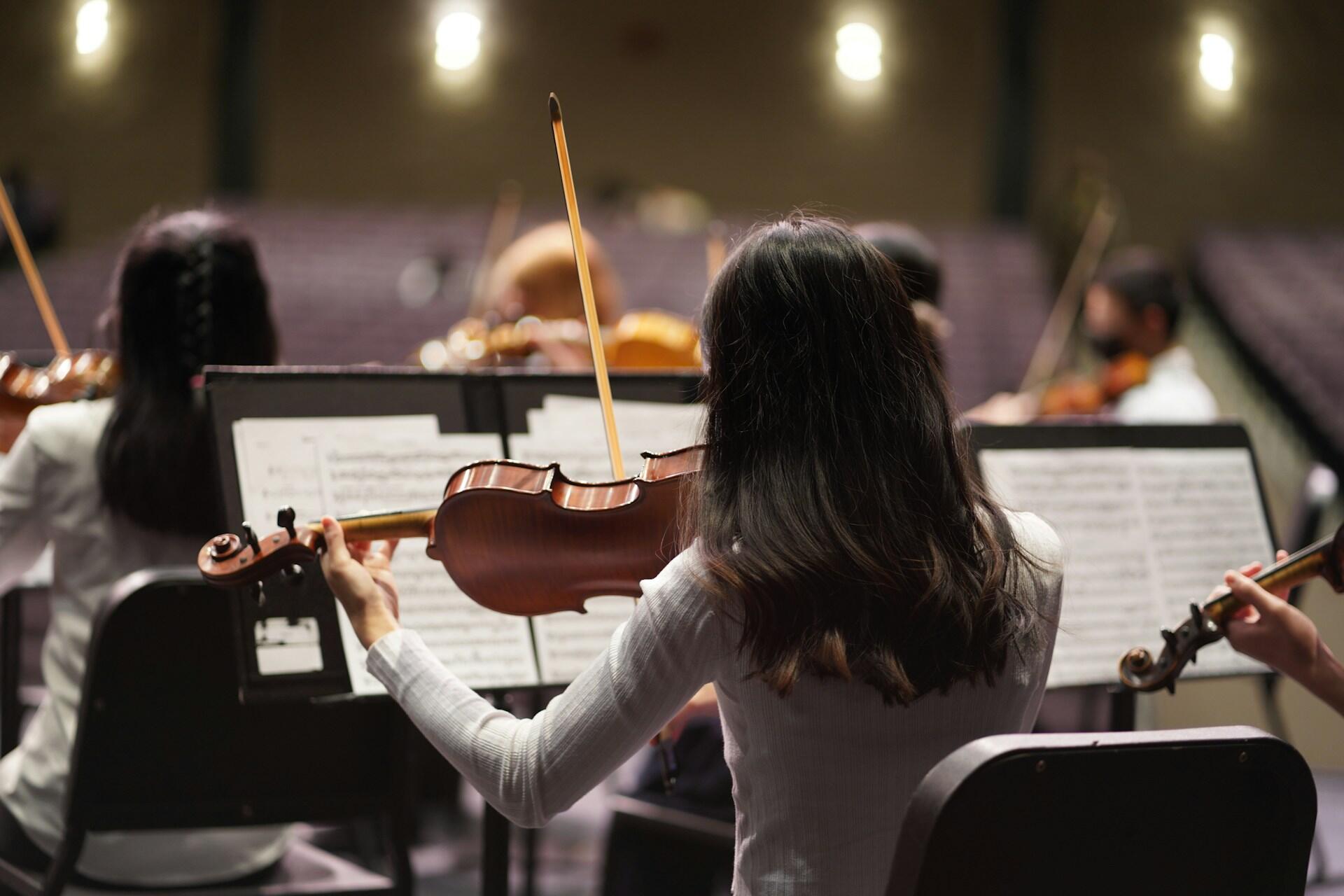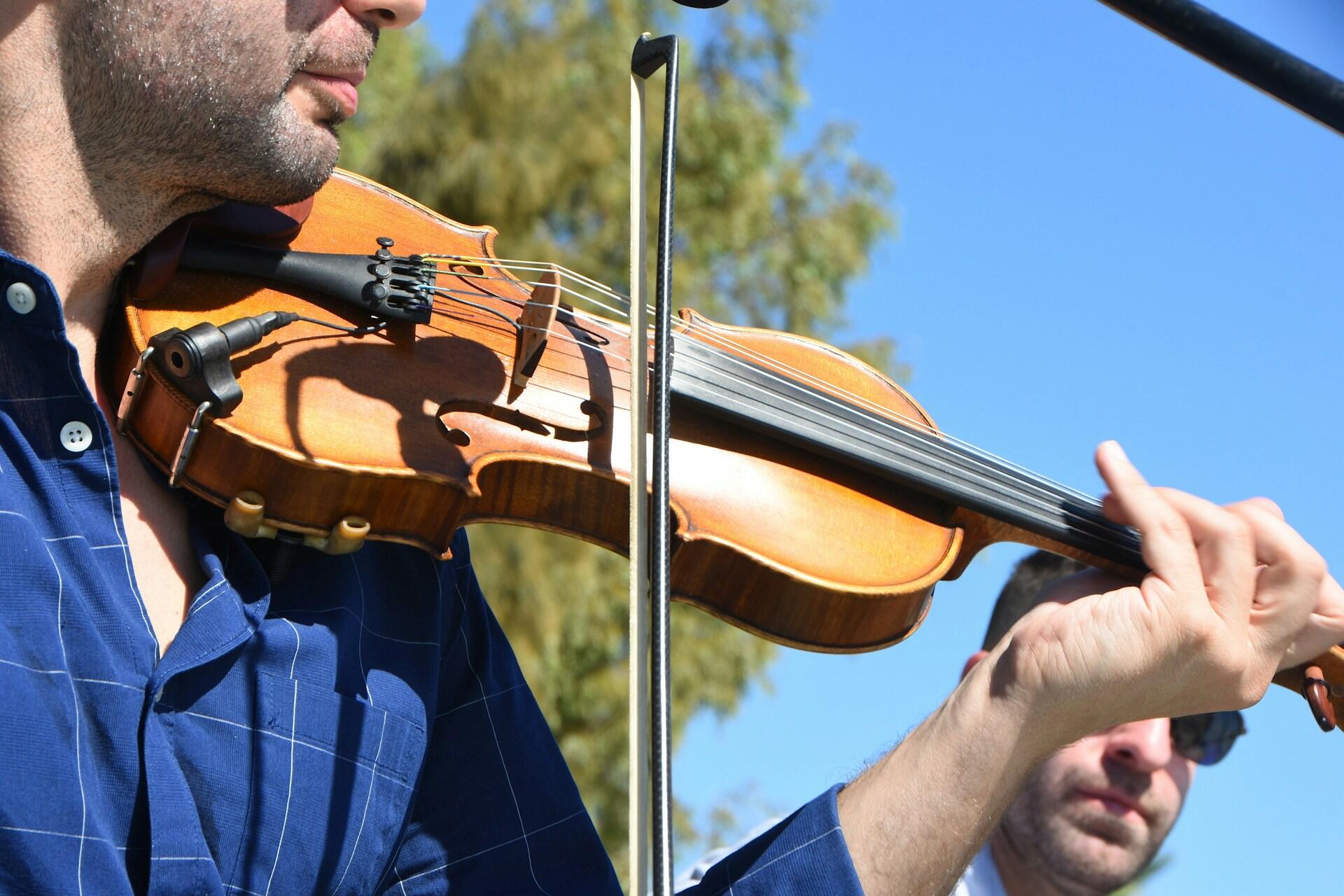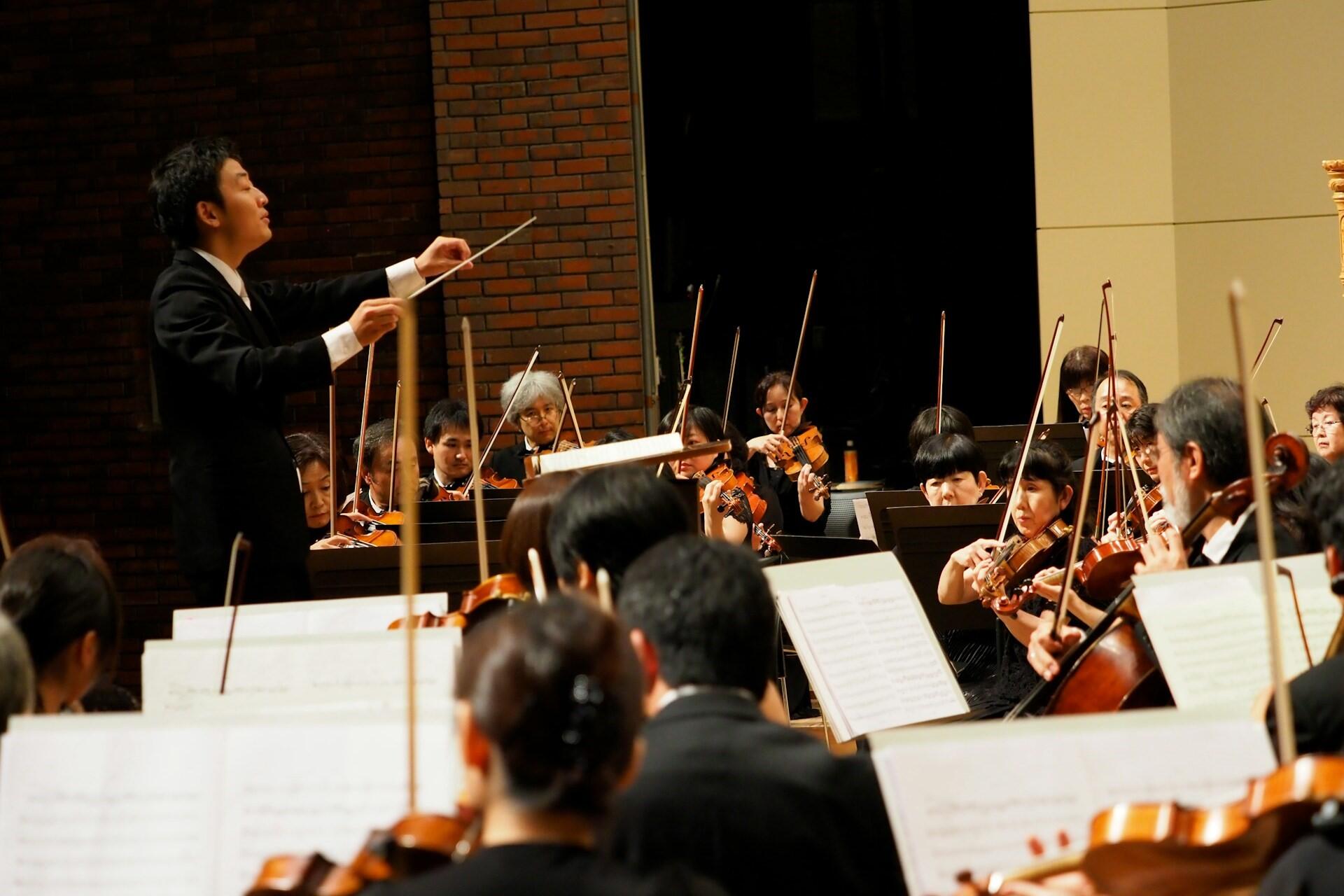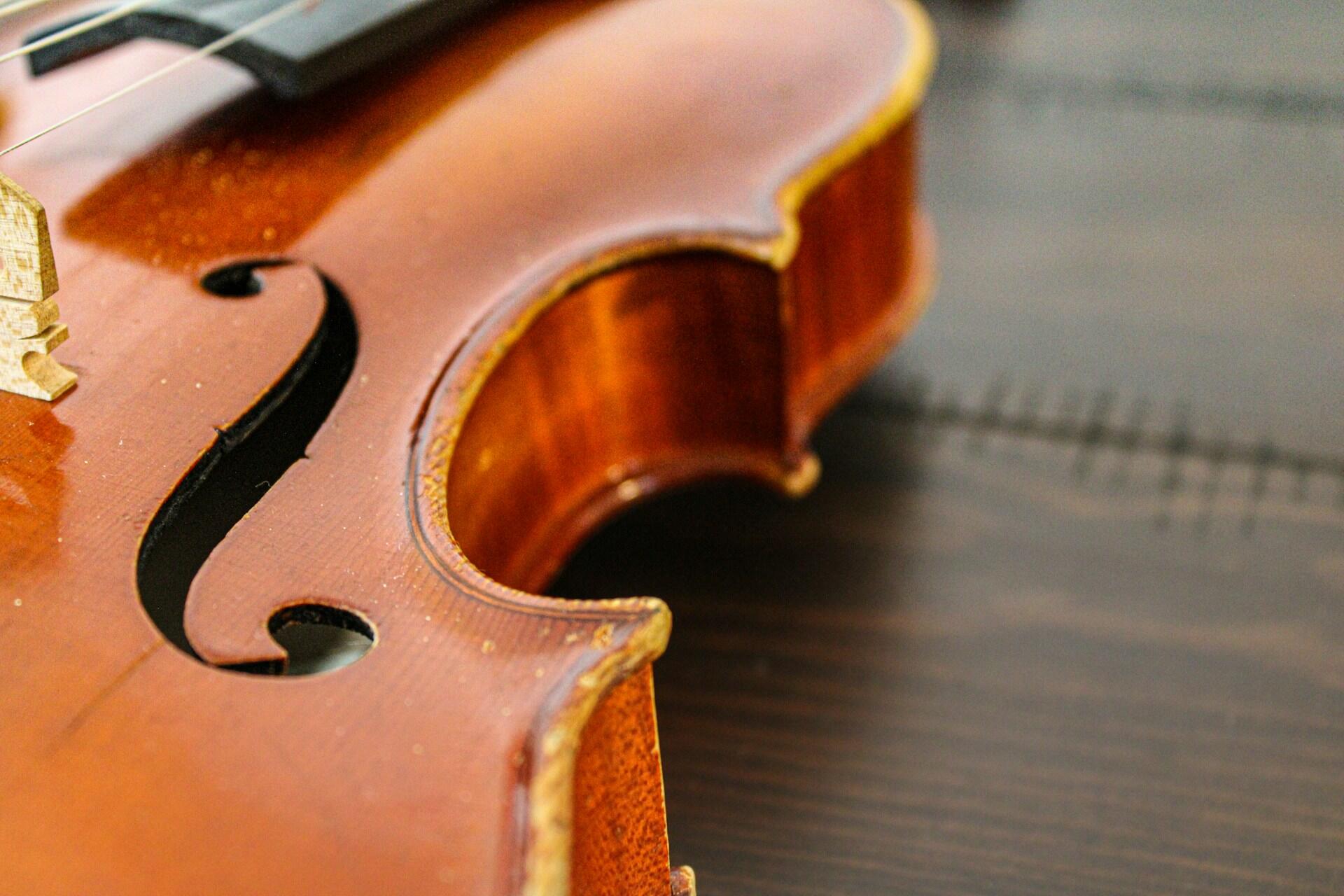Mastering the violin can take years of practice. The difference between an intermediate violinist and a virtuoso is their technical ability and repertoire. Here are some pieces that can push the limits of your technical skill, musicality, and endurance. So, what is the hardest violin piece to play?
The Hardest Violin Pieces
- Paganini - Caprice No. 24 in A Minor, Op. 1
- Ernst - Grand Caprice on Schubert’s “Erlkönig”
- Sibelius - Violin Concerto in D Minor, Op. 47
- Bach - Chaconne from Partita No. 2 in D Minor, BWV 1004
- Ysaye - Sonata No. 3 in D Minor, Op. 27 (“Ballade”)
- Vieuxtemps - Violin Concerto No. 4 in D Minor, Op. 31
- Wieniawski - Violin Concerto No. 1 in F-sharp Minor, Op. 14
- Sarasate - Zigeunerweisen, Op. 20
- Tchaikovsky - Violin Concerto in D Major, Op. 35
- Beethoven - Violin Concerto in D Major, Op. 61
- Saint-Saëns - Introduction and Rondo Capriccioso, Op. 28
- Bartók - Violin Concerto No. 2
- Ravel - Tzigane, Rhapsodie de Concert
- Prokofiev - Violin Concerto No. 1 in D Major, Op. 19
- Bazzini - The Dance of the Goblins (La Ronde des Lutins), Op. 25

Paganini - Caprice No. 24 in A Minor, Op. 1
This is one of the most complex violin pieces ever composed. Caprice No. 24 was written by the legendary Niccolò Paganini between 1802 and 1817.
Paganini was often referred to as the "Devil's Violinist", and his ability was often thought to have been given to him in a deal with the devil.
Why It's So Difficult
- Double Stops
- Left-Hand Pizzicato
- String Crossings
- Harmonics
- Bowing Techniques
Ernst - Grand Caprice on Schubert’s “Erlkönig”
This is a technical and emotional masterpiece composed in 1854. Ernst adapted Franz Schubert's art song "Erlkönig". He transformed it into a hard violin song that pushes the boundaries of what's possible on the instrument.
Why It's So Difficult
- Multiple Voices
- Left-Hand Pizzicato
- Double Stops and Chords
- Rapid Arpeggios
- Harmonics and High Positions
Sibelius - Violin Concerto in D Minor, Op. 47
This piece was composed by Jean Sibelius in 1904. It's a profoundly emotional and technically demanding piece.
The only concerto Sibelius ever wrote is one of the most challenging pieces in the violin repertoire.
Why It's So Difficult
- High Position Work
- Rapid Arpeggios and Scales
- Double Stops and Chords
- Intense Bow Control
- Virtuosic Cadenzas
Bach - Chaconne from Partita No. 2 in D Minor, BWV 1004
Johann Sebastian Bach's Chaconne was composed between 1717 and 1720 and is one of the most profound and technically demanding pieces for solo violin.
It's the final movement of the partita and lasts around 15 minutes. It pushes the violinist's skills and emotional depth to the limit.
Why It's So Difficult
- Complex Polyphony
- Endurance and Stamina
- Double and Triple Stops
- Bow Control and Dynamics
- Left-Hand Agility
Ysaye - Sonata No. 3 in D Minor, Op. 27 (“Ballade”)
Commonly known as Ballade, this is a wonderful example of virtuosic violin playing. Unlike traditional sonatas, Ballade is a single continuous movement that blends elements of improvisation with demanding technical challenges.

Why It's So Difficult
- Continuous Double Stops
- Advanced Bow Technique
- High-Position Fingerwork
- Intricate Harmonics
- Unbroken Structure
Vieuxtemps - Violin Concerto No. 4 in D Minor, Op. 31
Written in 1850, this is a favorite for advanced violinists with its intricate passages and dramatic flair.
The Belgian violin virtuoso Vieuxtemps highlights the violin's full expressive and technical capabilities in this piece.
Why It's So Difficult
- Extended Double Stops
- Rich Phrasing and Dynamics
- Fast Arpeggios and Runs
- Shifts Across the Fingerboard
- Virtuosic Cadenzas
Wieniawski - Violin Concerto No. 1 in F-sharp Minor, Op. 14
This piece is a combination of lyrical beauty and demanding technical challenges. Wieniawski was one of the greatest violin virtuosos of the 19th century and wrote this concerto to show off the violin's full expressive capabilities and his own prowess.
Why It's So Difficult
- Extended Double Stops
- Rich Phrasing and Dynamics
- Fast Arpeggios and Runs
- Shifts Across the Fingerboard
- Virtuosic Cadenzas
Sarasate - Zigeunerweisen, Op. 20
The Spanish violin virtuoso Pablo de Sarasate composed this challenging piece in 1878. It's inspired by the music of the Romani people and showcases technical ability and expression. It's popular among virtuosos for its dramatic flair and speed.
Why It's So Difficult
- Double Stops and Chords
- Extreme Tempo Changes
- Virtuosic Runs and Scales
- Pizzicato and Harmonics
- Gypsy-Style Techniques

Tchaikovsky - Violin Concerto in D Major, Op. 35
Pyotr Ilyich Tchaikovsky composed this in 1878. Though initially criticized, with one critic calling it "unplayable", it's now a popular choice among advanced violinists looking to move on from an intermediate level of playing.
Why It's So Difficult
- Fast Arpeggios and Scales
- Double Stops and Chords
- Extreme Bow Control
- High Position Work
- Virtuosic Cadenzas
Beethoven - Violin Concerto in D Major, Op. 61
Considered one of the greatest violin concertos ever written, Beethoven's 1806 composition is known for its lyrical beauty and structural perfection.

It requires flawless technique and is a challenging and rewarding piece for any advanced violinist, but what made Beethoven so great was that he wrote pieces that all violinists can play, from beginning violinists to virtuosos.
Why It's So Difficult
- Sustained Phrasing
- Dynamic Control
- High Position Accuracy
- Extended Cadenzas
- Orchestral Integration
Saint-Saëns - Introduction and Rondo Capriccioso, Op. 28
This was composed by Camille Saint-Saëns for the aforementioned Pablo de Sarsate. This showpiece is now a staple in the violin repertoire. As a standalone work (it was originally conceived as the finale for Violin Concerto No. 1), it blends lyrical melodies and virtuosic passages.
Why It's So Difficult
- Rapid String Crossings
- Complex Double Stops
- Pizzicato Passages
- Expressive Dynamics
- Flawless Bow Control
Bartók - Violin Concerto No. 2
This masterpiece of modern violin was composed between 1937 and 1938. Its innovative approach to harmony and structure is unlike traditional violin concertos.
This is written as a continuous sequence of three movements that blend Hungarian folk influences and avant-garde harmonies.
Why It's So Difficult
- Complex Rhythms
- Double Stops and Chords
- Extended Arpeggios
- Chromatic Runs and Shifts
- Virtuosic Cadenzas
- Harmonic Complexity
Check out this masterful rendition of the concerto.
Ravel - Tzigane, Rhapsodie de Concert
Maurice Ravel's Tzigane, Rhapsodie de Concert captures the spirit of traditional Gypsy music with a French impressionistic twist.
It was designed to showcase the technical prowess and dramatic expression of the Hungarian violinist Jelly d'Arányi.
Why It's So Difficult
- Extended Unaccompanied Cadenza
- Gypsy-Style Ornamentation
- Double Stops and Harmonics
- Fast Pizzicato Passages
- String Crossings and Arpeggios
- Virtuosic Runs and Shifts
Prokofiev - Violin Concerto No. 1 in D Major, Op. 19
Sergei Prokofiev's Violin Concerto No.1 in D Major, Op. 19, blends lyrical beauty and rhythmic complexity.
It was composed during the Russian Revolution but wasn't premiered until 1923 in Paris by the violinist Marcel Darrieux.

Why It's So Difficult
- Harmonic Complexity
- Rhythmic Challenges
- Long, Lyrical Lines
- Dramatic Shifts in Dynamics
- High Position Work
- Flawless Phrasing and Articulation
Bazzini - The Dance of the Goblins (La Ronde des Lutins), Op. 25
This was composed in 1852 by the Italian violinist and composer Antonio Bazzini. This is a showpiece that exemplifies the lightness and virtuosity of the violin. Bazzini was known for his technical prowess, and this piece reflects that.
Don't be fooled by the playful title. This is an incredibly tricky and challenging piece.
Why It's So Difficult
- Lightning-Fast Arpeggios
- Harmonics and Double Stops
- String Crossings
- Ricochet Bowing
- Fingered Octaves
Tips for Tackling Virtuosic Violin Pieces
Difficult things will take time, but there are ways you can improve more quickly.
- Practice Slowly and Deliberately: Complex passages in pieces like Ravel's Tzigane and Wieniawski's Violin Concerto No. 1 require slow, intentional practice to build muscle memory.
- Focus on Intonation: High-position playing demands flawless intonation, as found in Tchaikovsky's Violin Concerto. Use a tuner or practice with drones to fine-tune your pitch.
- Isolate Problem Areas: Break the piece down into manageable sections. If Vieuxtemps' Violin Concerto No. 4 challenges you with its rapid arpeggios, isolate that part and drill it consistently.
- Record Your Practice Sessions: Listening back helps you identify weaknesses in bowing or intonation that might not be apparent while playing.
- Work with a Metronome: Many of these pieces have dramatic tempo shifts, like Sarasate's Zigeunerweisen. A metronome can help you internalize those changes.
If you're in Memphis, consider exploring private violin lessons near me to receive personalized guidance.

Master These Pieces with Superprof
Learning to play the world's most complex violin pieces isn't something you should attempt to tackle alone. For students in Memphis, finding expert instruction can make all the difference.
Look for expert guidance with a private violin tutor. On Superprof, you can find violin tutors worldwide and enjoy personalized, one-on-one instruction tailored to your needs. For students in Kansas City, private violin lessons near me can offer tailored guidance to improve your technique.
Whether it's the double stops in Paganini's Caprice No. 24 or the complex polyphony of Bach's Chaconne, your tutor can help you. Search for violin tutors on the Superprof website and look for in-person and online tutoring. Those based in Los Angeles may also consider private violin lessons near me to tackle these challenges effectively.
Tutors can help you work on:
- Perfect your bowing techniques to execute clean string crossings and smooth legato passages.
- Understand the complex rhythmic structures in pieces like Bartók's Violin Concerto No. 2.
- Master high-position fingerwork that is crucial for works like Sibelius' Violin Concerto.
- Learn advanced techniques such as left-hand pizzicato and harmonics in Ernst's Grand Caprice.















